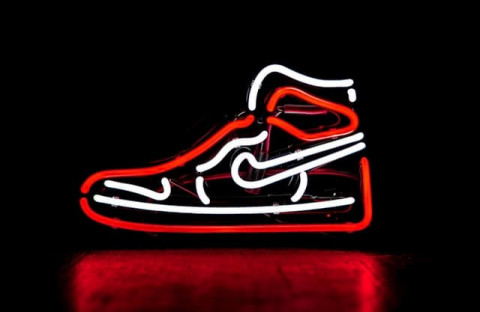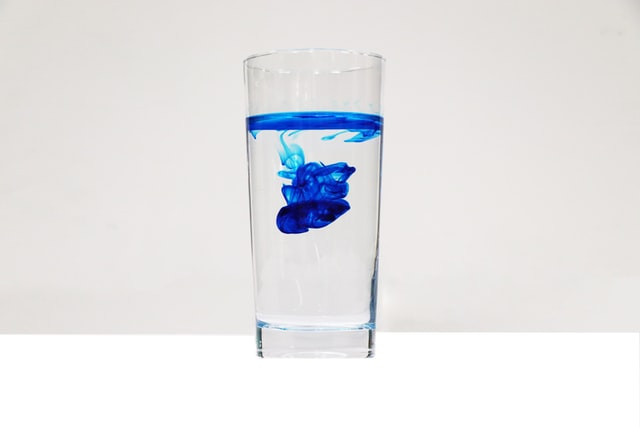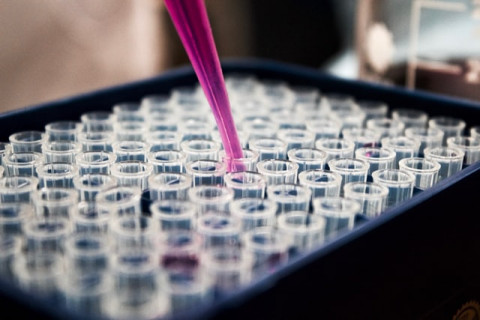
15 min
0
10.04.2022

To complete this laboratory work, you must recall the material covered on the topic "Osmosis and Diffusion." Using a notebook - synopsis or textbook provided by your science tutor for learning theory. Research reveals common student misconceptions in the fields of diffusion and osmosis. In particular, students find it challenging to understand that cells, like multicellular organisms, live in the environment and must perform all the actions necessary to stay alive. Common student misconceptions also include misconceptions about the difference between cells and molecules and the difference in size between proteins, molecules, and cells.
You can make a lab report on osmosis and diffusion within a few days. Thanks to this experiment, students will learn about all living organisms' structural units - the cell and its structure and functions. When doing tasks, it will be necessary to move molecules in and out through the cell membrane and interact with the environment.
To understand what osmosis and diffusion, it will be necessary to draw up conceptual maps and study the process of laboratory reporting using real examples and prove how the two concepts are related. To develop an experiment, the student needs to show their knowledge and experience in the study of osmosis and diffusion. Based on the results, the student will understand how semipermeable the membrane is.
Lab Report: Objectives and Required Equipment
All students need to make a basic lab report on diffusion and osmosis, because thanks to it, you will know how different substances move through cell membranes. For example, diffusion occurs across a semipermeable membrane. But also for its process, there must be no barrier, that is, a membrane. When making a diffusion experiment, factors such as temperature, molecular weight, electrical charge, and substance concentration must be considered. In turn, you will see that using this method, water moves according to the same principle - this will be osmosis.
With the help of the teacher's instructions, you will create the best biology lab report. Living plant cells are your primary means of experimentation. With these, you will see the membrane's movement in the dialysis tube, as defined by the semipermeable membrane of cellulose.
Main tasks:
- Apply laboratory reporting methods to study the problems of osmosis and diffusion;
- To study the difference between hypertonic, hypotonic, isotonic solutions;
- Understand how molecular weight affects the rate of diffusion;
- Record all experimental data in a scientific laboratory report;
- Show the teacher what skills you have gained for yourself while working on the assignment.
Required equipment:
- Protective gloves;
- Glasses for work in the laboratory;
- Shoes so as not to get wet.
- Red dye solution;
- Blue dye solution;
- Transparent glasses;
- Diazole tube;
- 250 ml solution;
- Glucose test strips;
- Plastic pipettes;
- 30 ml starch indicator solution;
- 250 ml starch solution.
Understanding the Concepts of Diffusion and Osmosis
Osmosis is a selective form of diffusion. Diffusion is based on the random flow of molecules and is much more common in gases, while osmosis base on the molecules' inherent ability in the water. The membrane in osmosis allows certain types of molecules to pass through, limiting the influx of other types.
In both osmosis and diffusion, molecules necessarily flow from an area of higher concentration to a lower one. A practical example of diffusion is when you spray a room freshener in a corner, and the whole room soon filled with scent. A practical example of osmosis is when you start feeling thirsty after eating something salty, as excess salt attracts water to the cells in the body.
Scientifically, both diffusion and osmosis are classified as "passive transport" since no external energy is needed to flow molecules. Osmosis is an important biological concept.
Diffusion and osmosis have an essential role in living organisms to support "homeostasis," "internal balance or equilibrium to regulate various mechanisms through cellular function." Recently, osmosis has also been used as a poetic concept and defines an educational concept in which a child learns by observing, interacting, and simply being in teachers and fellow students' company.
Procedure for Setting Up Osmosis Experiment
To make a good paper, follow this process:
- Take a small piece of dialysis tubing and cut exactly 10 cm.
- Then soak the dialysis tube in distilled water for a few minutes, but no more than 5.
- Take dental floss and tie it around one end of the dialysis tube.
- Pour 1% starch solution into the tube's space using a pipette, but not completely, leave a place so that you can tie the other end of the tube with dental floss.
- After filling in the required amount of solution, tie the other end of the dialysis tube.
- Fill a 250 ml beaker with distilled water.
- Add Lugol's iodine to distilled water, stir the solution until a uniform yellowish color.
- Place the dialysis tubing bag in the glass.
- The molecular formula of Lugol's solution is I2KI (atomic mass = 127). Starch is made up of long chains of glucose (atomic mass of each glucose = 180). Due to the presence of starch in the solution, the iodine will change color to dark blue. Formulate a hypothesis according to the research points. Explain each hypothesis using evidence. Examples of hypotheses:
- Movement of starch in the solution.
- Movement of iodine in solution.
- How does the color change in the bag after 30 minutes?
- How does the color change in a glass after 30 minutes?
- Place the dialysis bag in a glass and let the experiment run for 30 minutes. Record the colors of both the dialysis bag and the glass.
General Guidelines for Scientific Lab Report Writing
A scientific lab report is one of the types of student's independent work. In its implementation, the already studied theoretical material is used. Often, in preparing such an assignment, the student has many questions regarding its design. Use our writing assignments guide:
- Design the title page. Fill in the upper part of the document with the name of your educational institution. Indicate the type of work in the middle of the sheet. Below, under the type of work, indicate the topic of the work but without quotes. Go a few centimeters down to the right corner of the paper and write the last name, initials, group of your course. After this information, indicate the initials of the teacher who accepts the job. At the very bottom of the page, indicate the city of the educational institution and the year of writing;
- On the next page, describe the purpose of the work. This part is composed of the topic, the tasks that the student considers at work. Do not describe all the work, only the most essential details, by volume this part of the work amounts to several sentences, at most half a page;
- Your next assignment is to write the theoretical part. This section includes information about the work, that is, you need to describe which chapters the text consists of.
- Then describe the methods and tools you used in the experiment. Also, the reader should be told in a brief form of the process of experimenting;
- Describe what results in you achieved during the experiment. This section contains information about all the results you got from the first experiment to the last one. You can draw up this information in the form of computer modeling, certain values of quantities, graphs, tables, diagrams;
- Describe what kind of analysis of the results you conducted. That is, your task is to apply the laws of chemistry, biology to the results obtained and compare.
- Make a conclusion. Your task is to summarize the whole process of work. And also to cue the values of the results in life, obtained experimentally or theoretically, their dependence on the experimental conditions or the chosen calculation model;
- In the penultimate sheet, create applications;
- Your last page should contain a list of used literature, Internet resources.
Formatting
The formal lab report is executed on writing a standard A4 format on one side of the sheet, stapled in a binder or bound. It is allowed to issue a report on laboratory work in electronic form using Microsoft Office tools. The work's text should be typed with one and a half line spacing in Times New Roman font, size 12. Margins should remain on all four sides of the printed sheet: left - not less than 30 mm, right - not less than 10, bottom - not less than 20, and top - not less than 15 mm.
Suppose according to a special laboratory practice or a cycle of practical exercises. It is required to issue a general report at the end of the semester for the entire work cycle. In that case, separate reports are also drawn up for each cycle's work as they are completed. A final report is drawn up at the end of the semester based on reports for each work. The primary attention should be paid to the analysis of the results obtained in different laboratory works.
It is recommended to arrange laboratory work in a general notebook of 18-24 sheets. At the end of each work, there should be a teacher's mark about the defense. An independent work before the defense of laboratory work should be presented: answers to control questions; options for answering the test on the relevant topic of work.
Writing Style
Style is generally accepted norms. There is an official business style (including diplomatic), journalistic, and other styles that determine information presentation and vocabulary structure. By the way, style can affect how text is presented. The tone is how the letter will sound in the recipient's head the moment it is read.
In your case, this is a scientific work, and a scientific style corresponds to it. Its peculiarity is a generalization, abstractness, and an abundance of special scientific terms. The texts are logical; the language means carefully select. The texts written in a scientific style are not dialogues but monologues. Descriptions and definitions distinguish by high accuracy and consistency.
Repetitions are not terrible here; on the contrary: each concept has a clear name. The result depends on the correct choice of style, the correct presentation of information is essential for readers: they cannot see the author's gestures, eyes, or facial expressions.
Introduction (6 10 sentences)
The introduction should justify the relevance of the work. The relevance of work is the degree of its importance and a given situation for solving a specific problem, task, or issue. Justification of laboratory work's relevance explains the need to study this topic and conduct research on this issue. The relevance can be expressed in words::
- Of particular importance is the question ...
- The social significance of the topic is determined ...
- In connection with ... the problem has acquired great importance...
- Interest in the problem ... is conditioned by ...
The object and the subject of work are considered for relevance. The object of research is what will be taken for study and research. Usually, the research object's name is contained in answering the question: what is being considered? The subject of research is a particular problem, individual aspects of an item, its properties, and features, which will be investigated in work.
The following describes the purpose of the work, i.e., the desired result, which planned to be achieved due to work, is done. To draw up the work goals, you can use the following scheme: take one of the words such as explore, show, check, study, define, etc. Then add the object of study.
Materials and Methods
To create this section of the laboratory report, you need to use a vertical list, where you need to indicate all materials and methods used during the experiment. Specify information as specific as possible, without decoration. Indicate the chemicals, equipment, glassware used, indicating the size, quantity, and concentration, only in those points where it is necessary. Your task in the science lab report is to list, not describe the process; you have already done this in the central part.
If you have got the same results that has been published elsewhere, please refer to it and cite it. This will help you avoid repetition, thereby saving you time and limiting the number of words. However, be sure to mention any modifications you may have made to the standard procedure in the source you cite.
While providing detailed information is extremely important, exclude irrelevant information such as the color of the ice bucket or the name of the person who recorded your data. Such information should not be included in the article. Identify information that is relevant to your experiment and its analysis and includes only that.
Results
The lab reports results contain a statement of observations, the results of experiments, measurements, comparisons, counts, and their discussion. The study results must be sufficiently fully so that the reader can trace its stages and assess the validity of the author's conclusions. This is the main section, which aims to prove a working hypothesis by analyzing, synthesizing, and explaining the data.
If necessary, the results are supported by illustrations (tables, graphs, figures), which present the original material or evidence in a collapsed form. The illustrated information mustn't duplicate that already provided in the text.
It is desirable to compare the results presented in the article with the previous works in this area by both the author and other researchers. Such a comparison will additionally reveal the novelty of the work carried out and give it objectivity. The study results should present briefly, but at the same time, contain sufficient information to evaluate the conclusions reached. It should also be justified why this particular data selected for analysis.
Discussion (5-10 sentences)
The next structural section of a scientific article after the "Research Results," which is unique to it, is "Discussion of Results." It is included in the article's size, which can lead to its exceeding, therefore "Discussion of results" should be as short as possible.
The contents of the "Discussion" section come to life, according to the following plan:
- based on the formulations of the tasks presented in the "Introduction," build a logical chain between their consistent solution and the elimination of the corresponding causes and negative consequences of the actual problem;
- interpret only those thematic indicators that indicate the successful resolution of specific scientific problems and explain how they provide this;
- based on this explanation, logically substantiate the fact of achieving the set scientific goal and eliminating the considered topical problem;
- provide the research results of other scientists, based on which this justification can be interpreted, as part of your author's approach to solving the problem;
- formulate this approach, using the interpretation provided, thus creating a model of the problem studied;
- based on this model, predict new results and, if possible, confirm them with experimental data from other scientists.
Formatting
Conclusion (2-3 sentences)
The conclusion, along with the introduction, is also an essential part of the work. The conclusion outlines the following aspects:
- conclusions made by the author of the work on the study of the theoretical part of the work;
- results of the analysis of the research subject;
- recommendations for improving the subject of research.
It is good if the conclusion to the chemistry lab report begins with a short introduction to the topic of work. Conclusions should be short, laconic, but generalizing the essence of the analyzed issue. Copying parts of the text from the introduction or the central part in the conclusion is not allowed.
The conclusion can be created as a solid text or as a numbered list. As a rule, the second case writes: "As a result of the work done, the following conclusions were made." A numbered list follows. If a hypothesis was formulated in the introduction, it is necessary to indicate whether it has been confirmed or refuted.
How Long Should a Lab Report Be?
Laboratory works differ in meaning and type of task, and respectively, the volume is different. Most of them take 3-5 sheets, but in some laboratory ones, the volume reaches 5-10 sheets. For individual subjects, laboratory tests are submitted not on paper, but in computer programs; in this case, explanations and input data fit one sheet.
Regardless of the subject, the sections in the laboratory work will be similar in volume if the design takes place on paper and has a classic look:
- Title page.
- Content - 1 sheet.
- Introduction - 6 - 10 sentences.
- The theoretical base is 1-3 sentences.
- List of equipment - 1 sheet.
- The results of experiments or experiments 3-5 sentences.
- Discussions 3-10 sentences.
- Conclusion - 1-3 sentences.
- Answers to security questions 2-3 sentences.
- List of used literature - 1 sheet.
Don’t Forget to Proofread and Edit Your Paper
With the help of online error checking programs, you can perform text editing online. To do this, add text to the window and run the check. Errors are highlighted in red, and the lower window offers an option for an immediate fix. As a result of one check, found errors, tautologies, foreign words shown, and the water level is calculated.
Correction of errors in the text is possible using online tools and stationary programs. Most of the free versions are designed to detect obvious bugs. Some paid versions of online services provide advanced functionality for more thorough checking and automatic editing. No program can replace the work of a real proofreader. Better content analysis is performed only by real specialists.
Therefore, we recommend that you entrust the text's editing to those who are well-versed in this. If you want to listen to the work's assessment or understand whether you wrote the article well, you can entrust the document's reading to your friends.
Common Mistakes When Conducting Research
In the course of laboratory tests, errors are possible. Each determination's final result consists of the actual values and a particular research error, it's an integral part. Evaluation of the result's reliability and clinical assessment requires knowledge of the types of errors during the study. Clinical research errors can be classified as follows:
- mistakes preceding research;
- analytical error (laboratory);
- interpretation error.
Error before doing the research. This error covers a group of factors associated with the patient's preparation for the examination, collecting and storing material before the analysis starts. Factors leading to an error before conducting a study:
- when preparing a patient for research: non-standard time of day, unaccounted diet or medication, etc.;
- when taking material: insufficient asepsis, improperly prepared dishes for the material, etc.;
- during storage of the material: time, temperature, sterility, the need for separate storage of different samples.
Analytical error (laboratory). This error is associated with the course of the study of biological material in the laboratory. There are several types of such errors:
- Systematic error (precision) expresses the difference between the received and the actual values. The source of the systematic error is the peculiarities of the method or the ways of its implementation.
- The random error characterizes the reproducibility (repeatability) of results between parallel samples under given conditions.
Result interpretation error. A single laboratory test results in disease diagnosis or monitoring during treatment can be a source of numerous errors. For example, physiological fluctuations in some parameters are sometimes quite significant and affect the result's clinical interpretation. These changes can be cyclical: hourly, daily, seasonal. In such cases, additional research is required.



